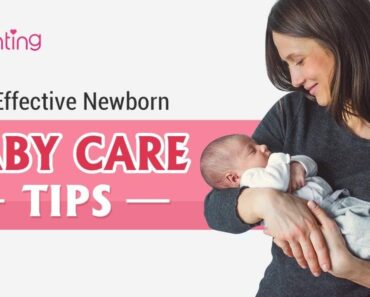Even at age four or five, Annie Lake* remembers being debilitated by headaches that came on quickly. “I’d be at the park and I would get really hot and sweaty. Then I’d get a besieging, painful headache,” she recalls.
Now, at age 42, she’s finally got a bit of control over her excruciating headaches—but not without a lot of pain and suffering along the way. As a kid, her parents would give her Tylenol to treat the headache, but it wasn’t until her teen years that a doctor used the word “migraine” to label what she was experiencing and gave her advice on how to handle or avoid them.
“In my 20s, my migraines were severe enough that my main activity in life was trying to get better,” she recalls. Unable to work or take care of herself for stretches of time, she put off having kids. “I remember thinking, These are very severe. I don’t think I could take care of someone else.”
In Canada, 25 percent of women get migraines—significantly more than the eight percent of men who are affected.
Unlike a typical headache, “migraine is a neurobiological disorder,” says Christine Lay, neurologist and medical director of the Centre for Headache at Women’s College Hospital in Toronto. “There are a number of changes that go on in the brain,” she adds. In addition to the headache pain, these changes can cause sensitivity to lights, sounds and smell; fogginess; a loss of appetite and vomiting—all of which can impact your quality of life. Managing migraines is difficult, but there are some things you can do to decrease the frequency and intensity.
How do I know if I have migraines?
Devon Reilly* had only had a handful of headaches in her life until her mid-30s. “The migraines started after I stopped nursing my second child,” recalls the mom of two, who lives in Victoria. “I’d get a bad headache, and I’d puke and take a Gravol. For days, I’d be in a bad headspace. My words weren’t clear; I had trouble articulating things sometimes. It was like brain fog.”
It wasn’t until several years later, when she finally told a doctor at a walk-in clinic about her regular painful headaches, that she learned she might be suffering from what should actually be labelled as migraines. A visit to a specialist confirmed it.
People get headaches for all sorts of reasons—drinking too much alcohol and skipping a regular coffee are common causes. But migraines are more than a nuisance headache here or there—migraines represent an ongoing condition characterized by severe headaches, explains Lay. While there are some telltale signs of migraine—sensitivity to light and sound, intense pain (often on one side of the head), and nausea and vomiting—not everyone experiences migraine in the same way.
About 20 to 30 percent of people have sensory changes, like changes to vision (also called an aura), prickliness or numbness in the limbs, or difficulty finding words. “A lot of people think they have tension headaches, or they have menstrual headaches, or they have sinus headaches, or they have weather headaches—but the vast majority of them actually have migraine,” says Lay.
For Reilly, also 42, the pain is so unmistakable that she’s not sure how she went years without realizing she was having migraines—although having two young kids at the time meant she wasn’t paying much attention to her own health. “It’s like knife stabs in the middle of my head. I’ll wake up with nausea and I have to run to the washroom.”
Interestingly, Lay says that if you get migraines as an adult, you were likely more prone to sleepwalking and motion sickness as a kid and to colic as an infant. A 2012 study in the journal Neurology found a significantly higher prevalence of colic in babies born to mothers who get migraines, and the authors speculate that infant colic may be a precursor of migraines later in life. Lay explains the theory behind a link between colic and migraine this way: “It’s the brain not knowing how to deal with the onslaught of sensory input, so the infant is inconsolable.”
Up until puberty, the percentage of boys and girls who have migraines is similar—about seven percent for both groups. But after a girl gets her period, that number increases to 15 or 20 percent, says Sian Spacey, director of the University of British Columbia Headache Clinic.
Understanding migraine triggers
Women who report getting a migraine before an oncoming storm aren’t imagining things—common migraine triggers include changes in weather, sleep deprivation, getting too much or not enough sleep, food additives and dyes, and even a strong smell, like walking by a store’s perfume counter. Changes in hormones, particularly drops in estrogen, can also cause migraines—this is why many women are hit with a migraine right before getting their period and around ovulation. Unfortunately, it’s not as simple as identifying one or two triggers and then avoiding them.
“People have a migraine threshold,” explains Spacey. “Below it, you can experience your triggers and nothing happens. But once you’ve reached the threshold, you’ll get a migraine.” For example, one day you might have a glass of wine and be totally fine. But if you have that glass of wine on a day that there’s a wild swing in weather and you’re about to start your period—bam! Killer migraine.
“Headache is not the beginning of a migraine. Headache is the first clinical awareness that we’re in the midst of a migraine,” says Lay. “But for hours before, we may have been noticing that the light was bothering us or that we were tired. We may have been yawning more and craving sleep. A lot of patients have a difference in their bowels, whether constipation or diarrhea. Others feel sad or have low energy,” says Lay.
Both Lay and Spacey say that the key to keeping your brain out of that migraine state is to manage your lifestyle. “Migraineurs [people who get migraines] have this sensitive brain,” explains Spacey. “It’s the extremes that trigger it, and living a level lifestyle seems to help.” The cruelty of this is that the things that prevent your brain from going into that migraine state—getting consistent, good-quality sleep; eating healthy meals at regular times; getting out every day in nature; meditating and exercising; and minimizing daily stress—are not easy for a parent. It can be a frustrating loop: “Parents with young kids put their children first. This makes them susceptible to migraines, and then they can’t be there for their kids,” says Spacey.
There’s good news for migraine sufferers who get pregnant, though. Many women see an improvement during pregnancy, especially in the second and third trimesters, because estrogen is stabilized. However, a bad migraine can come on after delivery, when estrogen levels plummet. (Note that both ibuprofen and acetaminophen are safe to take when you’re nursing.)
Birth control pills can also trigger or improve migraines, depending on the person and the type of pill.
How to deal with migraines
If you think you suffer from migraines, or know you do, but haven’t been able to get a handle on them, Lay suggests keeping a symptom diary for a few months. “You don’t need to go overboard and write down every single thing you ate. Start by just marking down in the calendar when you had a headache. For some women, it might be right before they get their period, and for other women, it’s mid-cycle, just after ovulation.” Since changes in sleep patterns can cause headaches, you might find you’re getting them on weekends—even if you’re just “sleeping in” until 8 a.m. instead of getting up with the kids at 6:30 a.m.
Both Reilly and Lake have seen links between migraines and their hormone levels. “I have to track my cycle. The second I get a headache in my danger zone times, I know I have to be really proactive and medicate,” says Lake. Her migraines are also triggered by skipping a meal, lack of sleep or the calm after a period of stress. Reilly instantly gets a headache if she has any alcohol.
Both women have worked with doctors to figure out a medication plan that works for them. “The majority of migraine patients are going to need something to take when a migraine gets going because those headaches are extremely disabling,” says Lay. “Some patients say, ‘I’d rather not take anything; I’ll just tough it out.’ It’s not great for the patient to do that.” She explains that treating with meds right away is better than taking a wait-and-see approach, because the migraine will likely just get worse, and then you’ll need even more medication.
Lake says that being a parent to a two-and-a-half-year-old makes some aspects of managing migraines more difficult—she often has to push through serious pain rather than being able to lie in a dark room all day like she was able to in the past. But all those typical mom things we do for our kids—like packing lots of snacks for outings and making sure to stop to rest, eat and hydrate—have ultimately helped her keep her migraines at bay. “Becoming a mom has been a positive. It helped me become more aware that you want to prevent those hunger attacks,” she explains. “I’m a very cerebral person, so I’d forget about my body needs. And my kid thrives on routine, which is also good for migraines.” She still gets a migraine or two a month, but compared to what she’s experienced in the past, she considers that an improvement.
*Names have been changed.

































